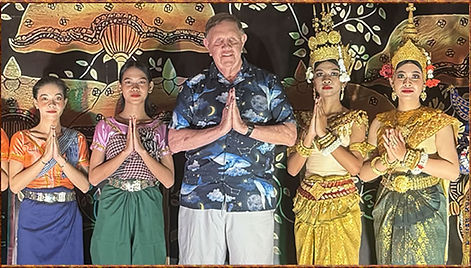



September 2025

Exploring Together Again!
Kim and I are SO excited that we met John & Valerie on our 2023 Viking River Cruise on the Nile. We became instant friends and at the conclusion of our adventure the four of us agreed we needed to look for future cruises together. And so we've booked one! We will be heading to Southeast Asia in the Fall of 2025 aboard the Viking Saigon (newly launched in 2022) to sail along the mighty Mekong River as we travel through Vietnam & Cambodia. Kim and I went here in 2017 with Avalon, but we both have been anxious to revisit one of our favorite spots we've been. AND we will be adding a post-extension to Bangkok, Thailand - a place we have never been before! Preview our trip HERE, and check out our daily itinerary HERE.
You can check out our 2017 trip along the Mekong river HERE.



September 15: Angkor Temples
CLICK HERE for today's photos & stories

September 16: Angkor Wat
CLICK our picturefor today's photos & stories


Sept 26: Welcome To Bangkok
CLICK OUR PICTURE To See Today's Photos
Sept 27: Happy B'day Kim!
CLICK OUR PICTURE To See Today's Photos
Sept 28: Our Final Day
CLICK OUR PICTURE To See Today's Photos
September 29: Day 18
After breakfast, check out of your hotel and proceed to the airport for your return flight. (B)





















